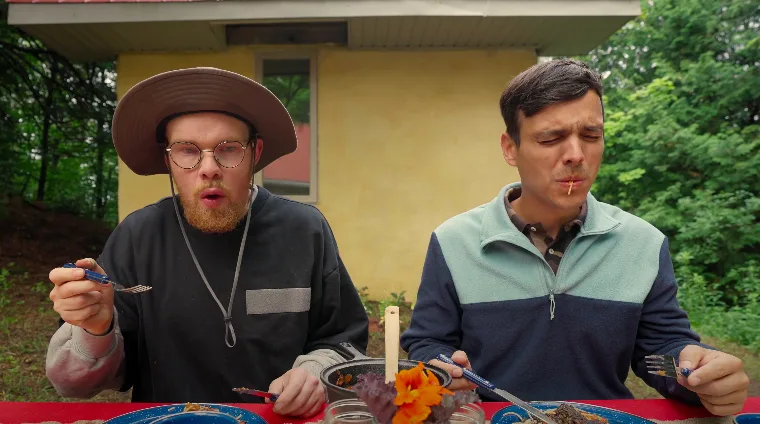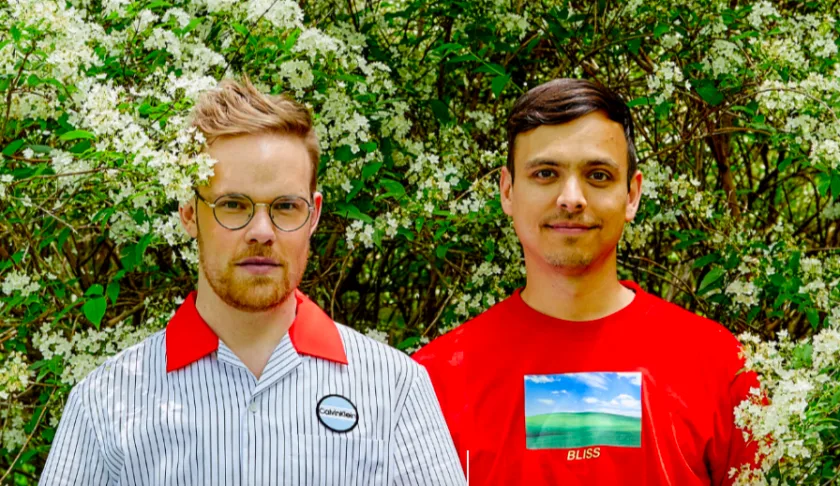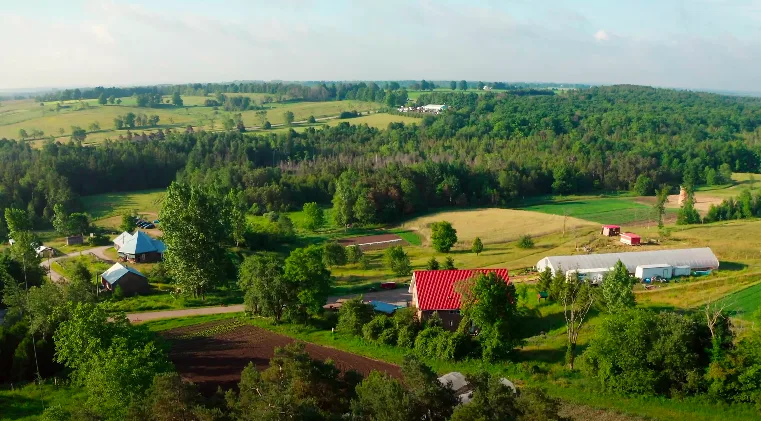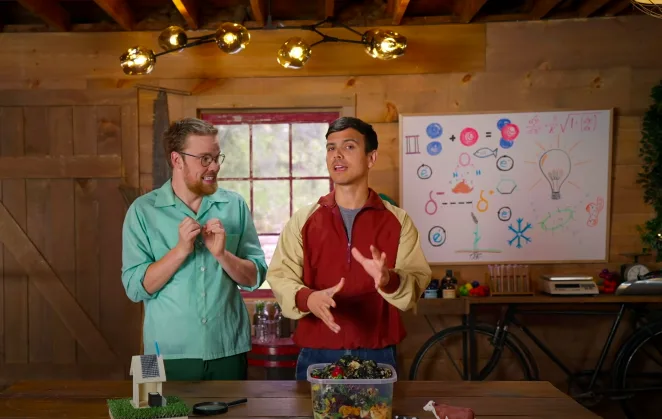
YouTubers show us what it's like to live off-grid at a remote Ontario farm
Living off-grid can be challenging, but these YouTubers show us that science, creativity, and help from knowledgeable experts can result in electricity and agriculture that is sustainable.
Have you ever tried to heat a hot tub using manure? It’s easier, and less stinky, than you might think. This is a question that the YouTube duo AsapSCIENCE tackle head-on in their latest series. It's also a compelling way to get young people talking about climate change without necessarily talking about climate change.
“The main goal for us was that it be a show about climate change and about the climate crisis that wasn't all doom and gloom. Because we think that can be really overwhelming. There's a whole subset of people experiencing eco-anxiety now, so we just wanted to find a way to talk about it be serious, but also have some fun, and just show that it can be uplifting and we can all have a little bit of hope,” Mitchell Moffit told The Weather Network.
For nearly a decade, Mitchell Moffit and Gregory Brown have created entertaining explainer-style science videos covering all types of topics, such as “What If You Only Ate Chips,” and their channel currently boasts an impressive following of 9.83 million subscribers. Their latest series is a YouTube Original that documents their journey to a remote farm in Ontario with a goal to live completely off-grid.
As each aspect of their remote life is shut off, such as their electricity, the two self-proclaimed “city boys” come up with a variety of sustainable contraptions to recreate amenities that we often take for granted.

Gregory Brown (L) and Mitchell Moffit (R) are the duo behind the YouTube channel AsapSCIENCE. (AsapSCIENCE)
They also enlisted the help of subject experts, farmers, and Indigenous guides to learn more about off-grid living. The experts’ knowledge quickly proved to be essential.
Shawn Adler, an Indigenous chef and owner of the Pow Wow Cafe in Toronto and The Flying Chestnut Kitchen in Eugenia, took the creators foraging and pointed out nutritious plants such as watercress and garlic mustard. After Gregory noticed a patch of purple flowers, Adler notified them that the plant is extremely dangerous and fatal if consumed.
“I don’t think this is a good idea. This here will make you dead. This has a very apt name, this is deadly nightshade,” Adler explained.

The Shut It Off ASAP series was filmed at Everdale Farm in Ontario. (YouTube/ AsapSCIENCE)
Moffit said that the combination of humour, hard science, and knowledge from a wide variety of experts were all important aspects of their show.
“It’s nice to get different perspectives from the climate change movement, you know, it’s not just a movement for white people, or straight people, or men. There are all these different intersectionalities that we’re hoping to tackle on the farm as well,” Moffit said.
“This is a challenge we have faced on our YouTube for a long time, even as queer science communicators…there's this sort of prototypical voice and face of who is a scientist, which is often very serious and very stern. Because if not, how can we take you seriously if you're making jokes? But I think for us, it's important to not only break that boundary for, like, queer people and say, like, but you can also be yourself, your Big Gay self, however you want, and talk about science.”

Mitchell and Gregory explaining the science behind their sustainable solutions, which in this case was a hot tub powered by waste. (AsapSCIENCE)
YouTube Originals began premiering a number of series and specials in late October that are focused on sustainability in light of the COP26 conference.
The featured videos have the “Donate Now” button feature, which YouTube says is an opportunity for people to support organizations that are fighting against climate change. One of the organizations, Count Us In, aims to inspire one billion people to reduce their emissions and challenge global leaders to make change, and the other, Re:wild, works to protect and restore biodiversity through innovative collaborations.
Thumbnail credit: YouTube/ AsapSCIENCE












